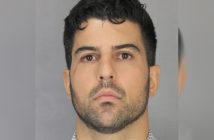While many businesses have already made significant changes to their daily operations in light of the coronavirus (COVID-19) pandemic, New York State has now made some of those changes mandatory with its workforce reduction order. On March 19, 2020, Governor Cuomo updated his prior Executive Order. Excluded from the mandatory workforce reduction are those businesses providing “essential services or functions.” Among the excluded businesses are health care operations, essential infrastructure and manufacturing, including food processing and pharmaceuticals, essential retail including grocery stores and pharmacies, essential services such as trash collection, mail and shipping services, construction, child care, and services needed to ensure the continuing operation of government agencies and to provide for the health, safety and welfare of the public.
Businesses seeking an exemption from this workforce reduction order may seek an opinion from the Empire State Development Corporation as to whether the business is deemed essential and therefore excluded from the reduction requirements.
EFMLEA amends the federal Family Medical Leave Act of 1993 (“FMLA”). The EFMLEA modifies and expands the coverage of the FMLA in various ways. The revisions to the Act only cover employers with fewer than 500 employees (with limited exceptions), and employees who have been employed for at least 30 days. The EFMLEA provides qualified employees with paid family leave benefits when employees are unable to work (or telework) because of a need to care for a minor child due to the child’s school being closed or childcare provider being unavailable due to a public health emergency. A public health emergency is defined in the Act as an emergency with respect to COVID-19 declared by a federal, state, or local authority.
EPSLA also applies to employers with less than 500 employees, with limited exceptions. There is no minimum period of time an employee must be employed to be entitled to paid sick leave under EPSLA. Paid sick leave will be available to qualified employees under the following situations when they are unable to work (or telework):
If an employee qualifies for EPSLA, the employee would be entitled to up to 80 hours of paid sick leave, and apart-time employee would be entitled to time equal to the number of hours the employee works over a two-week period. Employees taking paid sick leave are entitled to be paid at their regular rate of pay, capped at $511 per day and $5,110 in total, for uses described in paragraphs (1), (2), or (3); and $200 per day and $2,000 in the aggregate for uses described in paragraphs (4), (5), or (6).
As of now, employers are responsible to pay for the paid time covered under this provision, however, covered employers that are required to offer paid sick leave will be eligible for refundable tax credits. The bill also provides that the Secretary of Labor may issue regulations excluding small businesses (fewer than 50 employees) from EPSLA’s requirements if compliance would jeopardize the viability of their business. Additionally, as with the EFMLEA, employers of health care providers and emergency responders may elect to exclude such employees from the application of the EPSLA.
NEW YORK EMERGENCY PAID SICK LEAVE
On March 18, 2020, New York Governor Andrew Cuomo signed emergency legislation guaranteeing certain job protection and pay for New York employees who are quarantined as a result of coronavirus (COVID-19). Effective immediately, employees subject to mandatory or precautionary orders of quarantine or isolation issued by the New York Department of Health, local board of health, or any other government entity duly authorized to make such an order relating to COVID-19, are entitled to job protection and sick leave as follows:
• Employers with 10 or fewer employees (as of Jan. 1, 2020) and a net income of less than $1 million must provide unpaid sick leave until the termination of any quarantine or isolation. During this period, an employee will be eligible for Paid Family Leave benefits and disability benefits, subject to a cap of $2,884.62 per week.
• Employers with 11-99 employees (as of Jan. 1, 2020) and those with 10 or fewer employees and a net income greater than $1 million, must provide at least 5 days of paid sick leave, and then unpaid sick leave until the termination of any quarantine or isolation. After the five days of paid sick leave, an employee shall be eligible for Paid Family Leave benefits and disability benefits, subject to a cap of $2,884.62 per week.
• Employers with 100 or more employees (as of Jan. 1, 2020) and all public employers must provide at least 14 days of paid sick leave during any order of quarantine or isolation.
Employees that are subject to quarantine or isolation as a result of non-business travel to a country identified as level 2 or 3 risk by the Center for Disease Control are excluded from this law. Employees excluded due to non-business travel would be eligible to use accrued leave provided by the employer; or if the employee does not have sufficient accrued leave, the employee can use unpaid sick leave for the duration of the mandatory or precautionary quarantine or isolation.
The New York State law described shall supplement, but not be in addition to, the benefits provided to employees under the under the federal legislation.















